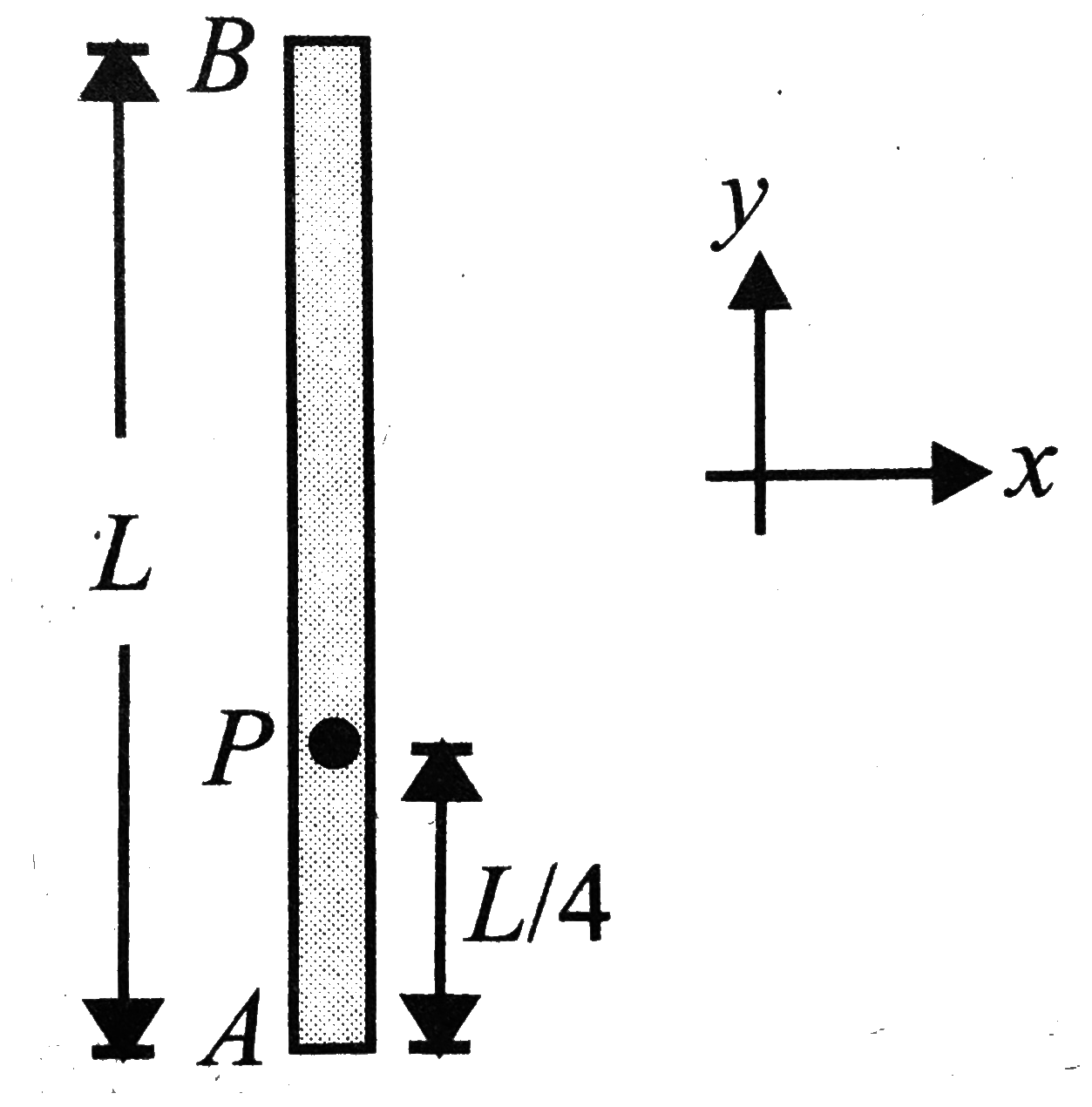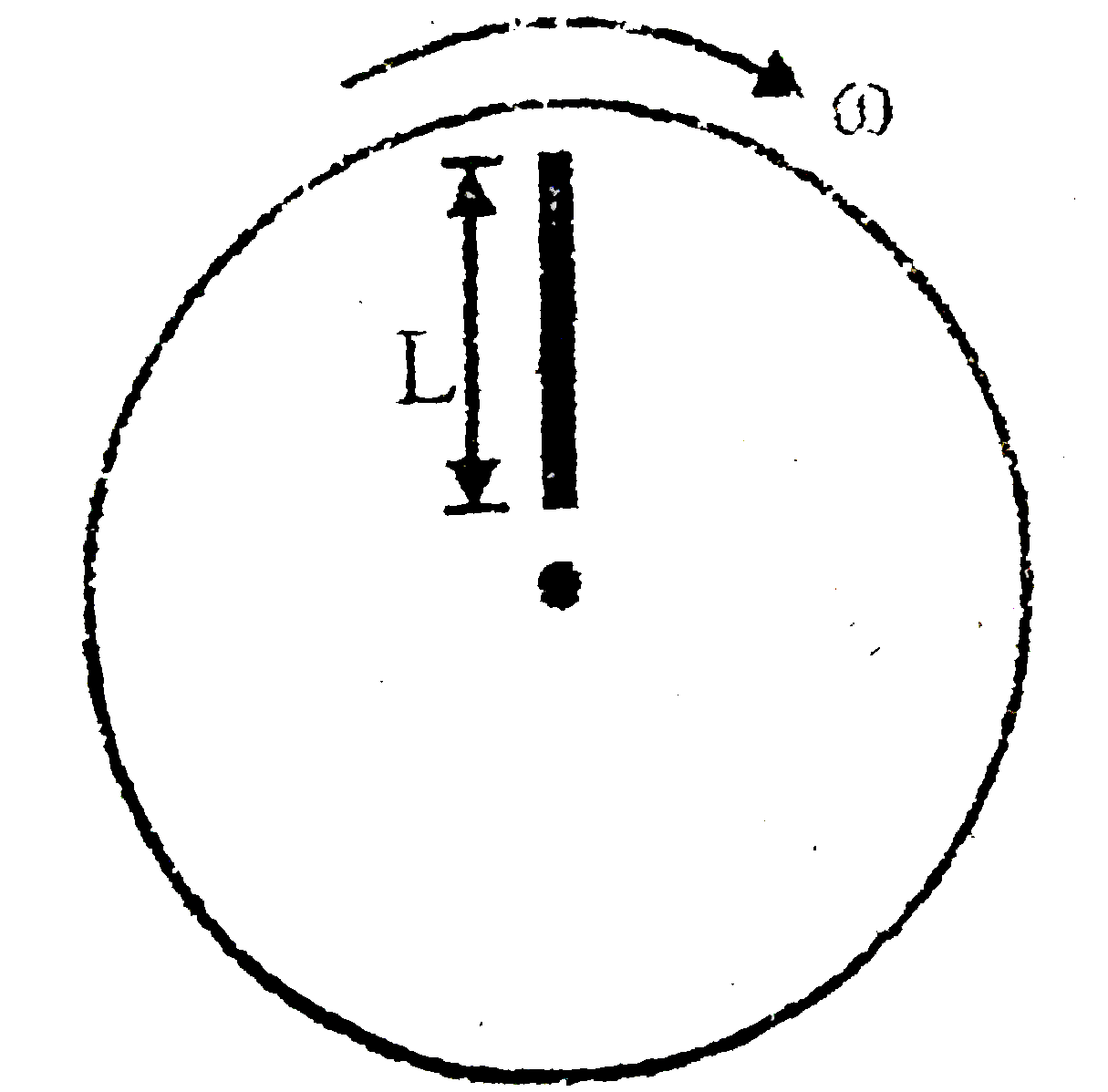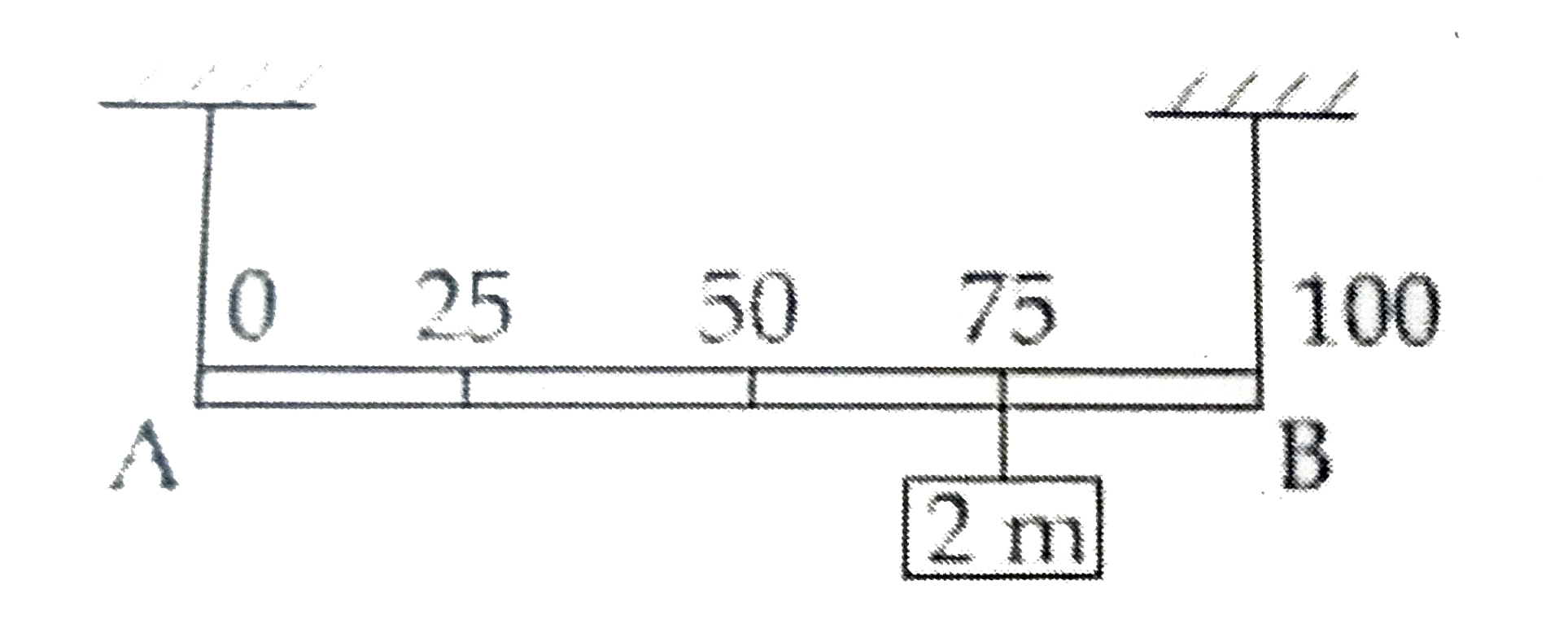A rod of weight w is supported by two parallel knife edges A and B and is in equilibrium in a horizontal position. The knives are at a distance d from each other. The centre of mass of the rod is at distance x from A. The normal reaction on A is.. And on B is......
1 . wd−xd ,wxd,
2. wd,wxd
3. wd,wx−dd
4.(xwd−x),xwd
The correct Answer is:c
To solve the problem, we need to determine the normal reactions at points A and B when a rod is supported by two parallel knife edges and is in equilibrium.
1. Identify Given Information:
- Weight of the rod, W
- Distance between the knife edges, d
- Distance from knife edge A to the center of mass of the rod, x
- Distance from knife edge B to the center of mass of the rod, d−x
2. Draw a Free Body Diagram:
- Represent the rod horizontally with knife edges A and B.
- Mark the normal reaction at A as N1 and at B as N2.
- The weight of the rod acts downwards at the center of mass.
3. Apply the Equilibrium Condition for Forces:
- Since the rod is in equilibrium, the sum of the vertical forces must be zero:
N1+N2=W(Equation 1)
4. Apply the Equilibrium Condition for Moments:
- Taking moments about point A (the moment due to N1 is zero as it acts at point A):
W⋅x=N2⋅d
- Rearranging gives:
N2=W⋅xd(Equation 2)
5. Substitute N2 into Equation 1:
- Substitute Equation 2 into Equation 1:
N1+W⋅xd=W
- Rearranging gives:
N1=W−W⋅xd
- Factor out W:
N1=W(1−xd)=Wd−xd(Equation 3)
6. Final Results:
- The normal reaction at A:
N1=Wd−xd
- The normal reaction at B:
N2=W⋅xd
Summary:
- The normal reaction on A is N1=Wd−xd.
- The normal reaction on B is N2=W⋅xd.
- Weight of the rod, W
- Distance between the knife edges, d
- Distance from knife edge A to the center of mass of the rod, x
- Distance from knife edge B to the center of mass of the rod, d−x
- Represent the rod horizontally with knife edges A and B.
- Mark the normal reaction at A as N1 and at B as N2.
- The weight of the rod acts downwards at the center of mass.
- Since the rod is in equilibrium, the sum of the vertical forces must be zero:
N1+N2=W(Equation 1)
- Taking moments about point A (the moment due to N1 is zero as it acts at point A):
W⋅x=N2⋅d
- Rearranging gives:
N2=W⋅xd(Equation 2)
- Substitute Equation 2 into Equation 1:
N1+W⋅xd=W
- Rearranging gives:
N1=W−W⋅xd
- Factor out W:
N1=W(1−xd)=Wd−xd(Equation 3)
- The normal reaction at A:
N1=Wd−xd
- The normal reaction at B:
N2=W⋅xd
- The normal reaction on A is N1=Wd−xd.
- The normal reaction on B is N2=W⋅xd.
Topper's Solved these Questions
- SYSTEM OF PARTICLES AND ROTATIONAL MOTIONSBOOK - NCERT FINGERTPS ENGLISHCHAPTER - SYSTEM OF PARTICLES AND ROTATIONAL MOTIONSEXERCISE - NCER EXAMPLAR PROBLEMS
8 Videos
- SYSTEM OF PARTICLES AND ROTATIONAL MOTIONSBOOK - NCERT FINGERTPS ENGLISHCHAPTER - SYSTEM OF PARTICLES AND ROTATIONAL MOTIONSEXERCISE - ASSERTION AND REASON
15 Videos
- SYSTEM OF PARTICLES AND ROTATIONAL MOTIONSBOOK - NCERT FINGERTPS ENGLISHCHAPTER - SYSTEM OF PARTICLES AND ROTATIONAL MOTIONSEXERCISE - ROLLING MOTION
16 Videos
- PRACTICE PAPERSBOOK - NCERT FINGERTPS ENGLISHCHAPTER - PRACTICE PAPERSEXERCISE - All Questions
150 Videos
- THERMAL PROPERTIES OF MATTERBOOK - NCERT FINGERTPS ENGLISHCHAPTER - THERMAL PROPERTIES OF MATTEREXERCISE - Assertion And Reason
10 Videos
Similar Questions
A rod of weight w is supported by two parallel knife edges A and B and is in equilibrium in a horizontal position. The knives are at a distance d from each other. The centre of mass of the rod is at a distance x from A.
View SolutionA uniform metre rod is bent into L shape with the bent arms at 90∘ to each other. The distance of the centre of mass from the bent point is
View SolutionA uniform rod AB hinged about a fixed point P is initially vertical. A rod is released from vertical position. When rod is in horizontal position:

The acceleration of the centre of mass of the rod is
View SolutionA rod is of length 3 m and its mass acting per unit length is directly proportional to distance x from its one end. The centre of gravity of the rod from that end will be at
View SolutionA rigid rod of mass m & length l is pivoted at one of its ends. If it is released from its horizontal position, find the speed of the centre of mass of the rod when it becomes vertical.
View SolutionA uniform rod of mass m and length l rotates in a horizontal plane with an angular velocity ω about a vertical axis passing through one end. The tension in the rod at a distance x from the axis is
View SolutionA uniform rod of mass m, length l rests on a smooth horizontal surface. Rod is given a sharp horizontal impulse p perpendicular to the rod at a distance l/4 from the centre. The angular velocity of the rod will be
View SolutionA uniform rod of mass m and length L lies radialy on a disc rotating with angular speed ω in a horizontal plane about vertical axis passing thorugh centre of disc. The rod does not slip on the disc and the centre of the rod is at a distance 2L from the centre of the disc. them the kinetic energy of the rod is

View SolutionA uniform rod AB of mass m and length l is at rest on a smooth horizontal surface. An impulse J is applied to the end B, perpendicular to the rod in the horizontal direction. Speed of particlem P at a distance l6 from the centre towards A of the rod after time t=πml12J is.
View Solution
Shown in the figure is rigid and uniform one meter long rod AB held in horizontal position by two strings tied to its ends and attached to the ceiling . The rod is of mass 'm' and has another weight of mass 2 m hung at a distance of 75 cm from A . The tension in the string at A is :
View Solution
